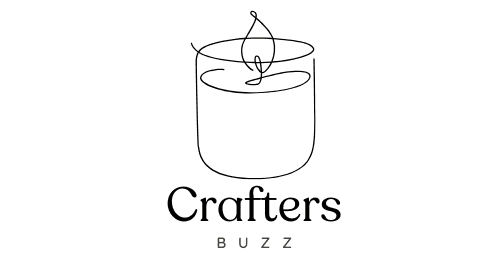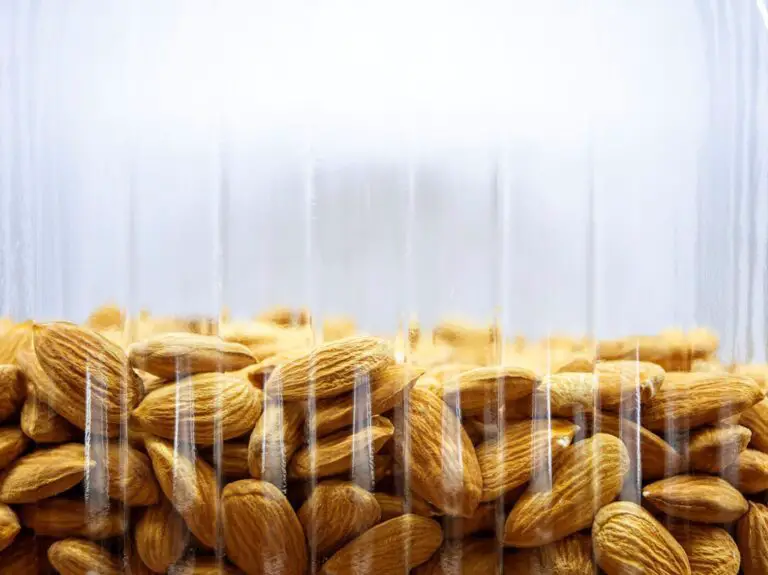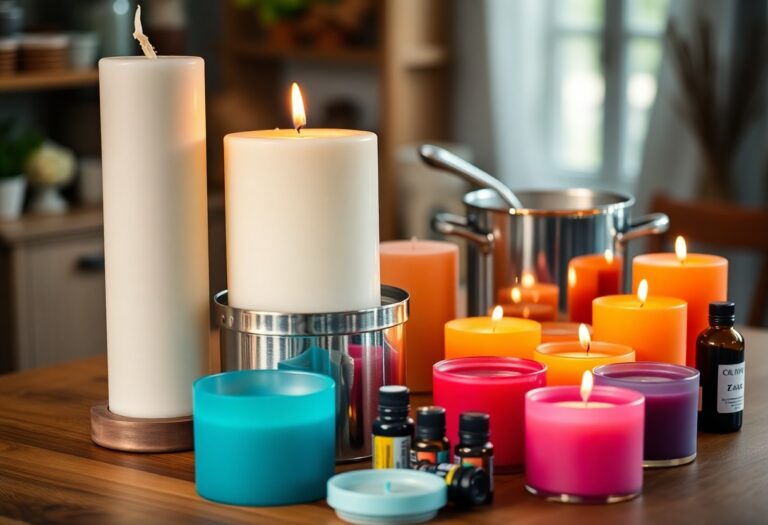Tips on reducing waste when making or buying candles.
The choice of materials in candle making plays a pivotal role in determining the environmental impact of the final product. Traditional candles are often made from paraffin wax, a petroleum byproduct that not only contributes to fossil fuel consumption but also releases harmful chemicals when burned. In contrast, opting for sustainable materials such as soy wax, beeswax, or palm wax can significantly reduce the ecological footprint of candles.
Soy wax, derived from soybeans, is renewable and biodegradable, making it a popular choice among eco-conscious consumers. It burns cleaner than paraffin, producing less soot and fewer toxins, which is beneficial for indoor air quality. Beeswax is another sustainable option that has been used for centuries.
It is a natural byproduct of honey production and is known for its air-purifying properties. When burned, beeswax releases negative ions that can help neutralize pollutants in the air. Additionally, beeswax candles have a longer burn time compared to their paraffin counterparts, which means they can be enjoyed for longer periods without needing to be replaced frequently.
Palm wax, sourced from sustainably harvested palm oil, is also gaining traction in the candle-making community. However, it is crucial to ensure that the palm oil is certified sustainable to avoid contributing to deforestation and habitat destruction.
Key Takeaways
- Choose sustainable materials like soy wax, beeswax, or coconut wax for candle making to reduce environmental impact
- Reuse old candle containers for new candles or repurpose them for storage or decoration
- Opt for minimal packaging when purchasing candles to reduce waste and environmental impact
- Buy candles in bulk to reduce packaging waste and minimize environmental impact
- Use natural and biodegradable wicks like cotton or hemp for a more eco-friendly candle option
- Make use of leftover wax and scraps by melting them down to create new candles or wax melts
- Recycle and dispose of candle waste responsibly to minimize environmental impact
- Support eco-friendly and ethical candle brands that prioritize sustainability and ethical production practices
Reusing and repurposing old candle containers
One of the most effective ways to promote sustainability in candle use is by reusing and repurposing old candle containers. Many candles come in beautiful glass jars or tins that can easily be cleaned and repurposed for various uses around the home. For instance, once the candle has burned down, the remaining wax can be melted and removed, leaving behind a stylish container that can serve as a storage solution for small items like buttons, paper clips, or even spices in the kitchen.
This not only reduces waste but also adds a personal touch to home organization. Moreover, repurposing candle containers can extend beyond mere storage. Creative individuals often transform these containers into planters for small succulents or herbs, adding a touch of greenery to their living spaces while giving new life to what would otherwise be discarded.
Some even use them as decorative pieces by filling them with sand and placing a tea light on top for an elegant outdoor ambiance. By finding innovative ways to reuse these containers, consumers can significantly reduce their environmental impact while enjoying the aesthetic benefits of their original design.
Opting for minimal packaging when purchasing candles
In an age where consumerism often leads to excessive waste, opting for minimal packaging when purchasing candles is a conscious choice that can make a significant difference. Many candle brands now recognize the importance of sustainable packaging and are moving towards eco-friendly alternatives. This includes using recycled materials or biodegradable options that do not contribute to landfill waste.
By choosing brands that prioritize minimal packaging, consumers can support efforts to reduce the overall environmental impact of their purchases. Additionally, minimal packaging often means less plastic and more recyclable materials. For example, some companies have started using cardboard boxes or paper wraps instead of plastic clamshells or shrink-wrapped products.
This shift not only reduces waste but also encourages consumers to think critically about their purchasing habits. When shopping for candles, looking for brands that emphasize sustainability in their packaging can lead to more informed choices and foster a culture of environmental responsibility among consumers.
Buying in bulk to reduce packaging waste
Buying candles in bulk is an effective strategy for reducing packaging waste while also saving money in the long run. Many retailers offer bulk purchasing options that allow consumers to buy larger quantities at a discounted price, which not only minimizes the amount of packaging used but also reduces the frequency of shopping trips. This approach is particularly beneficial for those who regularly use candles in their homes or businesses, as it allows them to stock up without contributing significantly to waste.
Furthermore, bulk purchasing often leads to more sustainable practices within the supply chain. When consumers buy in larger quantities, manufacturers are encouraged to streamline their packaging processes and reduce excess materials. This shift can lead to innovations in how products are packaged and shipped, ultimately benefiting the environment.
Additionally, some companies offer refillable options where customers can bring their own containers to fill with wax or purchase refills for existing candle holders, further minimizing waste and promoting a circular economy.
Using natural and biodegradable wicks
The wick is an essential component of any candle, yet it is often overlooked when considering sustainability. Traditional wicks are typically made from cotton or other synthetic materials that may not be biodegradable. In contrast, using natural and biodegradable wicks made from organic cotton or wood can enhance the eco-friendliness of candles significantly.
Organic cotton wicks are free from harmful chemicals and pesticides, ensuring that they do not release toxins into the air when burned. Wooden wicks have gained popularity in recent years due to their unique aesthetic and functional benefits. They create a crackling sound reminiscent of a fireplace when lit, adding an extra sensory experience to candle use.
Additionally, wooden wicks tend to burn more evenly and produce a larger flame, which can enhance the overall ambiance of a space. By choosing candles with natural wicks, consumers can enjoy their favorite scents while supporting sustainable practices that prioritize health and environmental well-being.
Making use of leftover wax and scraps
Leftover wax and scraps from candle making or use can often be seen as waste; however, they can be creatively repurposed into new products. For instance, leftover wax can be melted down and poured into molds to create new candles or wax melts. This process not only reduces waste but also allows individuals to experiment with different scents and colors without needing to purchase new materials.
By reusing leftover wax, candle enthusiasts can engage in a sustainable practice that aligns with their values. Additionally, small bits of leftover wax can be used as fire starters for outdoor activities such as camping or barbecuing. By combining wax scraps with sawdust or shredded paper, individuals can create effective fire starters that ignite easily and burn longer than traditional options.
This not only provides a practical use for leftover materials but also encourages resourcefulness and creativity in finding ways to minimize waste.
Recycling and disposing of candle waste responsibly
Proper recycling and disposal of candle waste is crucial for minimizing environmental impact. Many components of candles can be recycled or disposed of in an eco-friendly manner if handled correctly. For example, glass containers can often be recycled through local programs if they are cleaned thoroughly after use.
It is essential to remove any residual wax before placing them in recycling bins to ensure they do not contaminate other recyclable materials. Moreover, some communities have specific guidelines for disposing of candle wax and wicks. While many types of wax are biodegradable, they should not be disposed of in compost bins unless they are made from 100% natural materials without additives.
Instead, leftover wax should be placed in regular trash if it cannot be reused or recycled effectively. By educating themselves on proper disposal methods, consumers can take proactive steps toward reducing their environmental footprint while enjoying their favorite candles.
Supporting eco-friendly and ethical candle brands
Supporting eco-friendly and ethical candle brands is one of the most impactful ways consumers can contribute to sustainability in the candle industry. Many brands are committed to using sustainable materials, ethical sourcing practices, and environmentally friendly production methods. By choosing to purchase from these companies, consumers not only enjoy high-quality products but also support businesses that prioritize social responsibility and environmental stewardship.
In addition to material choices, many eco-friendly brands focus on transparency regarding their supply chains and manufacturing processes. They often provide information about where their ingredients come from and how their products are made, allowing consumers to make informed decisions about their purchases. Supporting these brands fosters a market demand for sustainability and encourages other companies to adopt similar practices.
As awareness grows around the importance of ethical consumption, consumers have the power to drive change within the industry by choosing products that align with their values and contribute positively to the planet’s health.
If you’re interested in making your own candles, you may want to check out this complete guide to DIY scented candles. It provides helpful tips and techniques for creating your own unique and fragrant candles at home. Additionally, if you’re looking to learn more about the cultural significance of candles, you can read about how candles are used in European castles in this fascinating article. And if you ever find yourself dealing with candle wax stains on your tablecloths, be sure to read this article on removing candle wax from tablecloths for some helpful tips on how to clean up the mess.
FAQs
What are some tips for reducing waste when making candles?
Some tips for reducing waste when making candles include using reusable containers, repurposing old candle wax, and using eco-friendly wicks and dyes.
How can I reduce waste when buying candles?
To reduce waste when buying candles, consider purchasing candles with minimal packaging, opting for candles made from sustainable materials, and choosing candles with longer burn times to reduce the frequency of purchasing new candles.
What are some eco-friendly alternatives for candle making?
Eco-friendly alternatives for candle making include using soy or beeswax, natural essential oils for fragrance, and cotton or wood wicks. These alternatives are more sustainable and biodegradable compared to traditional paraffin wax and synthetic fragrances.
How can I repurpose old candle wax to reduce waste?
Old candle wax can be repurposed by melting it down and pouring it into new containers or molds to create new candles. It can also be used to make fire starters, wax sachets, or as a lubricant for sticky drawers or zippers.












